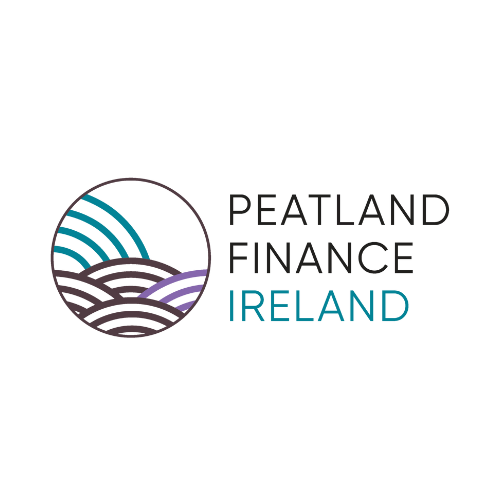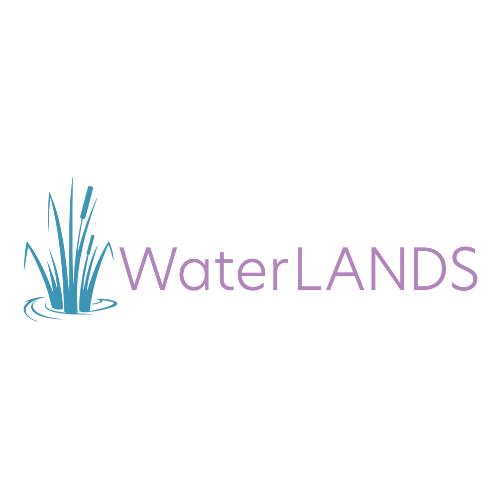
Investing in Critical Systems story series: Wetlands Peatlands are a little known but incredibly important type of wetland that could transform the fight against climate change with greater investment in their protection.
Storing a huge 30% of all natural carbon, peatlands are natural carbon sinks and biodiversity hotspots. Yet without adequate restoration efforts, degraded peatlands could drastically increase all our carbon emissions and hugely impact our efforts to combat climate change. Luckily more and more public and private sector investors and actors are determined to protect, preserve and restore these incredible landscapes for the benefit of all. With insights from research and various live projects, including a deep dive into the first peatland UNESCO World Heritage Site, the Lab makes the case why peatlands are critical landscapes that can create returns for investors alongside wider, positive social and environmental impacts.
Complex network of pools and islands in Estonian peatland landscape ©Mati Kose/Wirestock, Adobe Stock
Covering 6% of the earth, wetlands are unique ecosystems that support life for millions of humans, animals and plants. Wetlands come in many shapes and forms, where water is the primary factor that controls the environment. They include all lakes and rivers, swamps and marshes, deltas, estuaries, mangroves, rice paddies, reservoirs and more. 40% of the world’s plant and animal species live or breed in wetlands and more than half of the world relies on wetland-grown produce for their staple diet. Within these diverse and important landscapes, one ecosystem stands out as a landscape that is nature-rich, an incredible nature-based solution to carbon emissions and has the potential to generate long-term returns for investors: peatlands.
Peatlands are areas of waterlogged land with naturally occuring layers of peat – a carbon-rich soil that is formed over thousands of years. The water-logged conditions prevent plant material from fully decomposing, keeping carbon locked in and preventing it from entering the atmosphere. Peatlands occur in 180 countries worldwide from the arctic to the tropics to forested peatlands in Europe. They are natural ‘carbon sinks’, meaning they naturally remove carbon from the atmosphere and reduce the effects of global warming from greenhouse gases. In fact, despite covering only 3% of the world’s surface, they store nearly 30% of all natural carbon (450 to 650 gigatons) – almost twice as much as the entirety of Earth’s forest biomass. These superhero landscapes aren’t just removing carbon from our atmosphere, they also provide numerous additional benefits to humans, animals and plants alike.
Peatlands are an important store of freshwater – for instance up to 70% of the UK’s drinking water is sourced from catchments dominated by peatlands. They naturally filter out many pollutants and nutrients in surface and groundwater, lowering the burden on water treatment facilities. Similarly, peatlands across the world are a source of food through wild fruit gathering and/or as fishing spots. They can also be sites for paludiculture – a form of wet agriculture – that create green jobs and can yield commodity products, such as renewable biomass. Additionally, they are increasingly popular for ecotourists, especially because peatlands have often held sacred and important cultural value for local communities and art. For example, peatlands often contribute towards understanding the history of many places due to their ability to preserve artefacts, including “bog bodies” like the 2300-year-old body found in Tollund, Denmark.
Insectivorous sundew, one of the many species of bog plants. ©Adobe Stock
These superhero landscapes are also biodiversity hotspots and home to a wide range of wildlife and plant species. Consider a one square-kilometre of the Fenor Bog in Ireland. There they found 118 plants and 214 species of invertebrates, birds and mammals – an exceptional level of biodiversity. Additionally peat acts like a sponge and can store four times as much water as other types of soil. This ability means they are natural buffers against flooding.
Sadly, these incredible ecosystems are at risk. For many years peatlands were not seen as a “productive” landscape and were often drained to allow for agriculture, forestry and cattle grazing. You’ve also probably seen peat soil on sale in garden centres and extracted peat has been used for horticulture for many years. You can also use extracted peat as a fuel for heating. About 12% of the world’s peatlands have been drained and the European Union has experienced the largest losses, with over 50% of former peatland areas no longer accumulating peat. Not only has the degradation of peat affected the biodiversity of these areas and the other benefits listed above, but the degradation of peatlands hugely impacts our carbon emissions. Drained peatlands currently emit twice as much greenhouse gas as the aviation industry – this is because once the water-logged peat soil is exposed to air it releases all that stored carbon as CO² into the atmosphere. Drained peatlands are also a huge fire risk and peat fires can burn for weeks or months below the surface. In Indonesia the six largest peat fire events between 2004 and 2015 are estimated to have caused a total of USD 93.9 billion in economic losses.
Burnt peatlands in Sentral-Kalimantan, Indonesia ©Klima- og miljødepartementet, Flickr, CC BY-NC-ND 2.0
The call to invest in peatland restoration and preservation began in the 1970s and 1980s but only in recent years have we seen a real growth in momentum. In 2016, the Global Peatlands Initiative was established with the aim to protect and conserve peatlands. Led by the United Nations Environment Programme (UNEP), it includes more than 50 global member organisations. In 2023, the UK government announced £7.5 million of government grants in peatland projects with the end goal of these projects showcasing the opportunities for private finance to invest in commercially viable paludiculture. In Ireland, developments are afoot for the creation on a national-scale peatland restoration financing system, spearheaded by Peatland Finance Ireland, and a major milestone was reached earlier this month with the publication of the draft Peatland Standard for Ireland (currently out for consultation) - a science-backed certification scheme that will enable landowners to attract finance for peatland restoration by offering investors verified ecosystem-benefit certificates.
The Landscape Finance Lab summarised the argument for investing in Peatlands in our recent publication, Investing in Peatlands (2024). This extensive report shares many case studies that show different ways private investors are engaging in peatland restoration and the combined social, climate and economic benefits. The report highlights four main methods to create returns on investment in peatlands: paludiculture, carbon payment systems, new biodiversity credit systems and ecosystem services. In addition, the report shows how many actors - such as the public sector, government or philanthropic donors - are derisking peatland financing to make it more attractive, through direct funding, technical assistance and supporting development of projects. Overall, the key message to take away is that while different investor types will have different risk appetites, methods and motivations for investing in peatlands, the case is strong for considering peatlands an emerging asset class.
As the investment community begins to take notice, the big question for peatland landscapes is - are they ready for green finance? The picture is mixed, but the peatland restoration sector around the world is taking steps to improve its investment readiness: aligning methodologies and impact measurements to international frameworks; running pilot programmes and establishing proof of concept; designing financial mechanisms; enhancing governance structures within organisations and creating dedicated legal entities to manage investments. Achieving scale will require a significant ramp-up of capacity within the sector, and successful models being replicated across the globe. The Lab, with support from the EU Horizon WaterLANDS programme, has established a peer-learning community to support peatland teams in the UK and Ireland developing their financing strategies - the Peatland Finance Collective. Networks such as this, to share knowledge, upskill staff and co-create resources for best practice will be crucial for accelerating progress.
Meeting of the Peatland Finance Collective (UK & Ireland) at the University of Leeds, October 2024
Perhaps one of the most inspiring examples of a peatland landscape making concerted efforts to become ‘investment ready’, and adopting new financing models, is the world’s first peatland World Heritage site: The Flow Country. Covering around 200,000 hectares in the far North of Scotland, the Flow Country was given UNESCO World Heritage status on 26 July 2024. It joins other incredible landscapes like the Galapagos Islands, the Serengeti and the Great Barrier Reef in securing this prestigious status. It is Scotland’s first World Heritage Site and the first in mainland UK for the global importance of its natural ecosystems. The Flow Country itself is a vast blanket bog that has been growing for over 10,000 years. It stores approximately 400 million tonnes of carbon, which is more than all the UK’s forests and woodlands combined, and is home to a bird assemblage not seen anywhere else in the world and supports over 10% of the global Sphagnum bog moss flora.
In 2020, the Lab along with other stakeholders, helped the Flow Country Partnership form the Flow Country Green Finance Initiative (FCGFI), a locally-led initiative to raise money to restore parts of the degraded Flow Country peatlands at scale. The FCGFI uses a blended finance investment model to support community development goals, create high quality jobs, carbon investments, ecosystem services, and support circular business models. By taking a holistic approach beyond carbon, supporting biodiversity, green jobs and community wellbeing, the FCGFI hopes to achieve above market-rate returns on carbon credits. Part of creating above market-rate returns on carbon credits is due to the projects offering high-quality ‘charismatic carbon’. What we mean by the ‘charisma’ of carbon refers to carbon credits coming from projects with a strong narrative that delivers public goods/benefits in addition to carbon capture. In this case, the Flow Country’s ‘charismatic carbon’ refers to wider biodiversity and social benefits the community and landscape receive, in addition to the carbon captured by restoring the peatland itself. Not forgetting investors are now able to support a World Heritage site through their investment, alongside the returns they can expect on carbon credits in the future.
©Flow Country Partnership
Indeed part of the excitement of the Flow Country being declared a UNESCO World Heritage Site is the potential of adding value to these new green finance models. Graham Neville, Head of Operations for the North of Scotland at NatureScot, and the Bid Lead for the Flow Country World Heritage Site project, shared how the ‘World Heritage Site status will lead to greater understanding of the Flow Country and raise the profile of Scotland’s peatlands globally for their value as biodiverse habitats and important carbon sinks’.
Leader of The Highland Council, Councillor Raymond Bremner noted, ‘World Heritage Status [...] will unlock private finance through a premium carbon price to green finance initiatives and provide long term rural development opportunities in green jobs, skills development, marketing, product development and tourism’. When sharing his congratulations on the successful bid, Founder and Leader of the Landscape Finance Lab, Paul Chatterton, shared ‘We hope the award serves as inspiration, raising the profile of peatlands as an unrivalled climate solution and we encourage investors to take a look at this as a nature positive product of the highest quality’.
RSPB Viewing tower, Forsinard, Flow Country ©Adobe Stock
The Lab is proud to have played a small part in the Flow Country’s journey towards putting its natural capital at the very heart of local regeneration plans. But this is by no means the end of the work at the Flow Country or other peatland projects around the globe. From the Great North Bog in England to Peatland Finance Ireland to Valuta voor Veen (Currency for Peat) in the Netherlands to The toMOORow Initiative in Germany, this is just the beginning of peatlands finance industry.
—
Here’s how you can get involved:
- If you’re an investor keen to find out more about about the Lab’s peatland portfolio, or a landscape team interested in collaborating on a peatland programme, get in touch with the Lab’s Wetlands Programme Manager, Rolf Hogan rolf@landscapelab.org. To get in touch with the Flow Country Partnership about investment opportunities, email flowcountry@north-highlands.co.uk
- Keep an eye out for our upcoming publication, Investing In Critical Systems - the short guide will explore a quick and practical methodology for directing investments into four critical ecosystems, including wetlands and peatlands, which we argue are crucial to solving our planetary crises.
- Join our mailing list to be the first to hear about news from the Nature Positive Landscapes Facility - a blended finance vehicle focused on landscape-scale biodiversity investments across our four critical systems, expected to launch in 2025.
Sources
- Investing in Peatlands, Landscape Finance Lab, https://landscapefinancelab.org/publications/investing-in-peatlands
- World Wetlands Day, Life interlaced: wetlands and people, UN, https://www.un.org/en/observances/world-wetlands-day
- About Peatlands, IUCN, https://www.iucn-uk-peatlandprogramme.org/about-peatlands
- How peatlands can help combat climate change, Angela Gallego-Sala, TEDxLondon, TEDx Talks on Youtube https://www.youtube.com/watch?v=ay-EvET5AGw
- Water Quality, IUCN, https://www.iucn-uk-peatlandprogramme.org/about-peatlands/peatland-benefits/water-quality
- Peatlands and Biodiversity, International Peatland Society, https://peatlands.org/peatlands/peatlands-and-biodiversity/
- What is the Global Peatlands Initiative?, Global Peatlands Initiative, https://globalpeatlands.org/about
- Scotland’s Flow Country secures World Heritage status, The Flow Country, https://theflowcountry.org.uk/news/scotlands-flow-country-secures-world-heritage-status/
- Find inspiration in one of the wildest, least altered landscapes in the UK, The Flow Country, https://theflowcountry.org.uk/nature-heritage/
- World Heritage Sites (WHS) are places of global significance, The Flow Country, https://theflowcountry.org.uk/projects/world-heritage/about/
- Green Finance Initiative, The Flow Country, https://theflowcountry.org.uk/projects/green-finance/
- Flow Country Green Finance Initiative, Landscape Finance Lab, https://landscapefinancelab.org/featured-landscapes/flow-country-green-finance-initiative
- Matthew Hay, Project Manager at Forest Carbon, offers insight in how to understand the UK’s voluntary carbon markets, by Matthew Hay & Jasmin McDermott, CLA, https://www.cla.org.uk/news/value-carbon/
- Congratulations to the Flow Country - Scotland’s first natural UNESCO World Heritage Site, and the first ever peatland to win the designation, Landscape Finance Lab, https://landscapefinancelab.org/news-and-insights/congratulations-to-the-flow-country-scotlands-first-natural-unesco-world-heritage-site-and-the-first-ever-peatland-to-win-the-designation
Related Publications
pdf
Investing in Peatlands
White Paper
18 Jan 2024
Featured Partners




